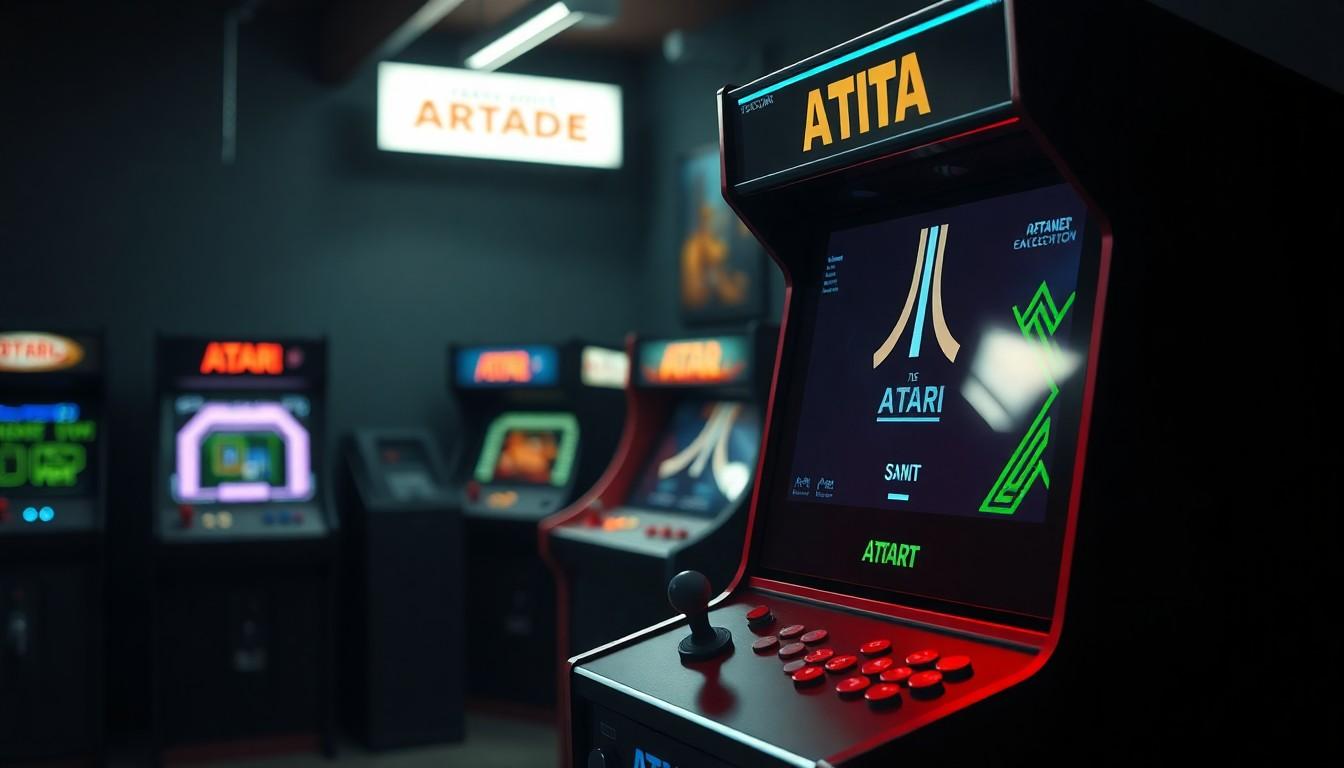Phone:
(701)814-6992
Physical address:
6296 Donnelly Plaza
Ratkeville, Bahamas.

Atari arcade games are more than just nostalgic relics; they’re the pixelated portals to a simpler time when high scores ruled and quarters were the currency of champions. Picture this: neon lights flashing, the sound of buttons mashing, and the thrill of beating your buddy’s score in a heated battle of reflexes. Those moments are what made arcade gaming legendary.
Atari arcade games stand as iconic milestones in the gaming industry. These games emerged during the late 1970s and early 1980s, solidifying their place in popular culture. Titles like “Pong,” “Asteroids,” and “Centipede” became instant classics, attracting players with their simple yet addictive gameplay.
The arcade experience involved engaging visuals and captivating sound effects. Players often gathered around machines, competing for high scores in an atmosphere filled with excitement. Many remember the distinctive look of the cabinets adorned with colorful artwork, which further drew players in.
Gameplay mechanics in these games emphasized skill and strategy. “Pong” introduced the concept of competitive play, while “Asteroids” required quick reflexes and precision. Gamers aimed to master each title, striving for the elusive and highly coveted top score.
Atari’s influence extended beyond the arcade. Home console adaptations brought these beloved games into living rooms, allowing families to enjoy the excitement without needing to visit an arcade. Iconic characters and gameplay styles set the stage for modern gaming.
Nostalgia plays a significant role, too. Older generations reminisce about their time spent in arcades, creating a sense of shared history. Many value Atari games not only for their entertainment but also for the memories they evoke of simpler days.
Atari’s legacy continues to resonate today. Many indie developers draw inspiration from its classic titles, showing that these early games still impact contemporary gaming. Collectors and enthusiasts cherish original arcade machines, celebrating their role in the evolution of digital entertainment.

Atari arcade games stand out due to their unique characteristics that enhance the player experience.
Classic Atari games utilize simple yet effective graphics, creating a vibrant visual experience. Pixel art style engages players while representing characters and settings clearly. Colorful, eye-catching designs complement gameplay, immersing players in each title. Sound effects, though basic, supply memorable audio feedback that enhances excitement. Catchy tunes and distinctive sound bites evoke nostalgia and keep players coming back. These elements share a fundamental connection to the retro feel of the arcade atmosphere, intensifying the overall enjoyment.
Engaging gameplay mechanics define Atari’s enduring appeal. Skill-based challenges require players to master controls for high scores. Immediate gratification comes from quick reactions and strategic planning, fostering intense competition. “Pong” pioneered multiplayer gameplay, introducing audiences to head-to-head matchups. Titles like “Asteroids” emphasized survival while encouraging players to control multiple variables, enhancing strategy. Each game draws players into a cycle of learning and improvement, cultivating a loyal fan base through addictive play. Skill and strategy remain central to the Atari experience, making these games timeless classics.
Atari arcade games remain timeless classics that continue to attract players. Several titles stand out as icons in this beloved category.
Asteroids debuted in 1979 and quickly became a sensation. Players navigate a spaceship through a field filled with drifting asteroids. Shooting them to break them into smaller chunks creates a frenzied gameplay experience. The objective is survival, with players needing to avoid collisions while racking up points. Notably, Asteroids introduced innovative vector graphics, enhancing visual appeal. Its multiplayer mode also added to the excitement, allowing friends to compete for the highest score. The game’s strategic challenge forged a lasting legacy, influencing countless future titles.
Space Invaders launched in 1978 and transformed gaming culture. Players control a laser cannon, shooting descending aliens before they reach the ground. This basic yet captivating premise strongholds its status as a revolutionary game. Increasingly difficult waves of aliens create an urgent sense of challenge. Players must master their shooting skills and timing to win. Space Invaders features one of the first examples of high score competitions, encouraging players to surpass one another. As a result, it became a cultural phenomenon that impacts modern gaming.
Pong, released in 1972, is often credited with popularizing arcade gaming. This simple table tennis simulator draws players with its addictive gameplay. Players control paddles to hit a bouncing ball back and forth. The objective is basic—score points by getting the ball past the opponent’s paddle. The straightforward mechanics cultivate friendly competition and excitement among players. Pong’s distinctive black-and-white graphics were iconic in their time, but the gameplay remains timeless. Its influence extends beyond the arcade, laying the groundwork for future sports games and multiplayer experiences.
Atari arcade games sparked a revolution in gaming culture, laying the foundation for the future of interactive entertainment. Nostalgia influences how players perceive these games, often recalling joyous times spent in dimly lit arcades. Titles like “Pong,” “Asteroids,” and “Space Invaders” became cultural touchstones, marking significant milestones in video game history.
Gameplay mechanics contributed significantly to Atari’s widespread appeal. Players navigated skill-based challenges, mastering controls for high scores. Engaging visuals and catchy sound effects drew players into an immersive experience, while distinctive cabinet artwork attracted attention. Friendships often formed around competitive play, promoting social interaction as an essential aspect of arcade gaming.
In addition, Atari introduced multiplayer competition through games such as “Pong,” fostering community and camaraderie. Thrilling challenges in “Asteroids” involved strategy and survival, captivating audiences through intense gameplay. Cultural shifts during the late 70s and early 80s witnessed a growing interest in video games, with Atari standing at the forefront of this transformation.
The legacy of Atari arcade games continues to resonate today. Indie developers cite these classics as inspiration, reflecting their lasting influence on modern gaming design. Moreover, collectors cherish the original arcade cabinets, recognizing their historical significance. High score competitions remain a popular aspect of gaming culture, directly stemming from the competitive spirit ignited by Atari titles.
Overall, Atari’s impact on gaming culture is undeniable, shaping the way players interact with games and each other. Its simple yet engaging mechanics created an enduring legacy, ensuring that Atari remains a pivotal part of gaming history.
Atari arcade games represent a cornerstone of gaming history that continues to resonate with players today. Their simple yet engaging gameplay mechanics foster a sense of community and competition that remains relevant. The nostalgia associated with these titles evokes cherished memories of arcade adventures and friendly rivalries.
As the gaming landscape evolves, Atari’s influence endures, inspiring new generations of developers and gamers alike. The legacy of Atari isn’t just about the games themselves; it’s about the shared experiences and connections forged in the vibrant atmosphere of arcades. This lasting impact ensures that Atari’s place in the world of entertainment will never be forgotten.